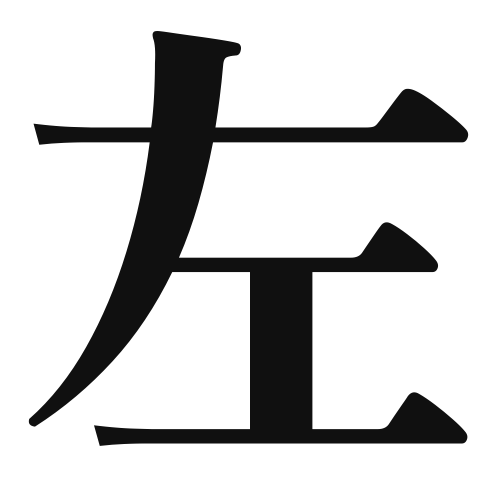1. Overview of Meaning
The kanji “左” (pronounced “hidari” in Japanese) means “left.” It is used to indicate direction, as in the opposite of “right.” In various contexts, it can also refer to the left side of objects or people.
2. Formation and Radical
The kanji “左” is a phono-semantic compound, which means it combines both phonetic and semantic elements. The left part of the character is a radical that suggests its meaning, while the right part provides a phonetic clue.
The radical for “左” is 工 (meaning “work” or “craft”), which is often associated with tools or construction, hinting at the practical aspects of using the left side.
3. Examples of Usage
Common words and phrases that include “左” are:
- 左手 (hidari te) – left hand
- 左側 (hidari gawa) – left side
- 左折 (saseki) – left turn
Example sentences in daily conversation:
- 「左に曲がってください。」(Hidari ni magatte kudasai.) – “Please turn left.”
- 「私の左手に本があります。」(Watashi no hidari te ni hon ga arimasu.) – “I have a book in my left hand.”
4. Synonyms and Antonyms
Similar kanji with related meanings include:
- 右 (migi) – meaning “right,” which is the opposite of “左.”
Antonyms include:
- 右 (migi) – right
5. Cultural and Historical Background
The concept of “left” has various cultural implications in Japan. For example, in traditional Japanese culture, the left side is often associated with the spiritual or the feminine, while the right side is linked to the physical or the masculine.
Proverbs and idiomatic expressions involving “左” include:
- 「左手に持つ」(hidari te ni motsu) – “to hold in the left hand,” which can symbolize a different perspective or approach.
